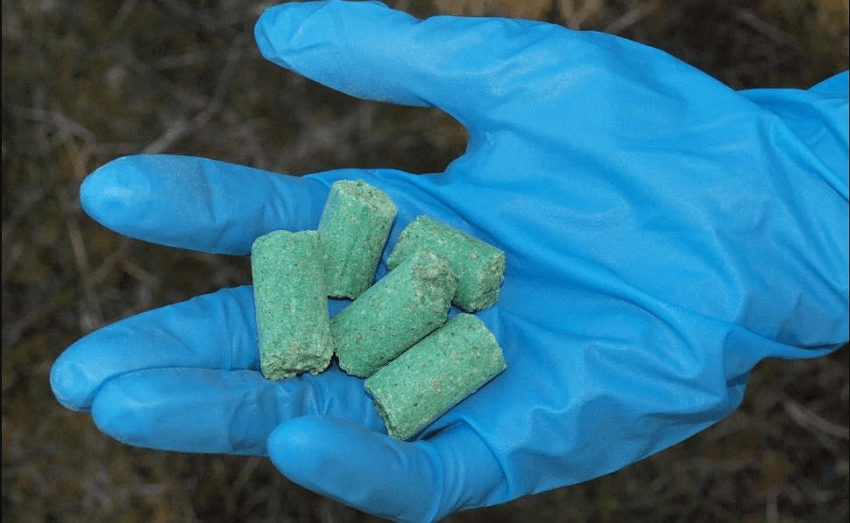Facebook is flooded with rabid anti-1080 activism, but the poison is the only barrier between many of New Zealand’s native species and extinction. Hayden Donnell goes into some 1080 facts.
Anti-1080 activism has erupted into the mainstream lately, with its leaders using belligerent and intrusive social media tactics to create an increasingly radical base of believers.
The movement’s overarching message is that the 1080 poison kills everything, massacring our native birds and other wildlife. In their minds, DOC workers and pro-1080 environmentalists are profiting from the poison, engaging in a shady government conspiracy, or doing even worse stuff involving the UN and eugenics.
They are… not correct. Here are some 1080 facts.
1080 is a poison and it can harm you
This is about the only thing the anti-1080 lobby is kind of right about. 1080 is a poison. If you eat several 1080 pellets, you could get sick or even die.
But it’s highly unlikely 1080 will kill you
Here are some reasons why:
- You really do have to eat at least one 1080 bait to get sick. 1080’s active ingredient fluoroacetate only makes up 0.15% of a 1080 bait. The rest is made up of cereal, green dye, cinnamon and a few other products. Despite claims from anti-1080 activists, there’s no evidence you can get sick from being near the poison.
- Eating a large, poisonous-looking green bait after coming across it in the bush is insanely dumb.
Despite that, heavy precautions are taken on 1080 drops
These include:
- Helicopters dispersing 1080 are equipped with GPS tracking so it’s possible to drop bait with precision.
- Baits are dyed green to repel birds, and scented with cinnamon to attract pests like possums and rats.
- Only about 2kg of 1080 baits are dropped per hectare during a pest control operation, meaning the pellets are hard to find even if you’re in an area where they’ve been dispersed.
- Following 1080 drops, like a 2015 operation in the Hunua Ranges, workers walked every track in the area twice, clearing any pellets and pest carcasses they found.
- Most 1080 pellets are dropped in remote areas far from human activity anyway.
- Water in the area of a 1080 drop is subjected to rigorous testing. Speaking of which…
1080 won’t poison your water
One of the main things anti-1080 activists claim is that the poison can contaminate water supplies and make people sick. That was lawyer Sue Grey’s main contention when she secured a temporary injunction against a 1080 drop set to take place in the Hunua Ranges last week.
There’s no evidence for that claim. 1080 breaks down in water, which quickly renders it all-but harmless. Dave Hansford, author of Protecting Paradise: 1080 and the Fight to Save New Zealand’s Wildlife, said you’d have to drink 60,000 litres of water in one sitting within four hours of a 1080 drop to get sick. Freshwater ecologist Mike Joy said the risk from 1080 in water is almost nil.
In the last 25 years, Landcare Research has done more than 3000 tests on waterways after 1080 drops. Only on four of those did it find detectable levels of 1080, and that amount was still within the Ministry of Health’s legal guidelines. For reference, a cup of black tea contains 1080’s active ingredient – fluoroacetate – at about 1.5 times the Ministry of Health’s legal limit for 1080 in drinking water.
1080 is biodegradable
It breaks down within weeks in normal conditions, or a few months in cold, dry environments.
The name 1080 seems like a bad idea
‘1080’ sounds like a robot designed in a lab with the express purpose of carrying out murders. The poison is actually a semi-natural product. Though it is created synthetically for drops in New Zealand, its active ingredient – fluoroacetate – is produced by plants in Australia.
Trapping isn’t a viable alternative
1080 is the only pest control available that can cover large tracts of remote bush. Extending trapping operations in places like the Hunua Ranges would mean harming the bush by cutting hundreds of new tracks and spending millions of more dollars on staff and equipment to carry out the operations.
1080 is helping – not massacring – our native birds
DOC has compared areas where 1080 has been dropped to areas where it hasn’t, and found native birds fare better where it’s present. The poison can cut rat and possum numbers by up to 95% over large areas of bush – and that means more native birds survive. Nicola Toki, DOC’s threatened species ambassador, said four species would go extinct within a few years if 1080 stopped being used tomorrow. Hansford said millions of birds would die without the poison. Many native species would be, scientifically speaking, “fucked” without 1080. Having said that…
Being poisoned by 1080 is a really crap way to die
Another thing both pro and anti-1080 campaigners agree on. Few people like putting poison in New Zealand’s native bush. But it’s the only way to preserve native species. We’ve lost 43 species of native bird since humans settled New Zealand. Eighty per cent of our birds are threatened. Humans introduced the pest problem that’s killing our native species. 1080 remains the best available way to to fix it.
Read more: When anti-1080 activism grew noisy, and got ugly
The Bulletin is The Spinoff’s acclaimed, free daily curated digest of all the most important stories from around New Zealand delivered directly to your inbox each morning.
